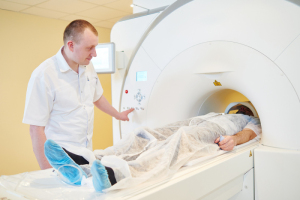by
John R. Fischer, Senior Reporter | September 13, 2017

New approach examines variety of
components to determine radiation
exposure and preserve image quality
A new technique may ensure proper amounts in radiation exposure and better image quality across a range of different sized pediatric patients during CT.
Researchers at Duke University Medical Center and Cleveland Clinic have developed a quantitative method that can assess a variety of components for determining the appropriate amount of radiation to administer while still preserving high image quality during CT exams, based on an individual patient’s body type. A study on the approach was published in the
Journal of Medical Imaging.
“It’s a composite of different elements, all of which are important, but to date, they’ve not really all been put together systematically,” Dr. Donald P. Frush, a professor of radiology and pediatrics at Duke University and an author of the study, told HCB News. “You make decisions based on the size of the patient but once you have a particular sized patient who’s 10 years old and it’s an abdomen pelvis CT, you just do it the same way each time that you’re dealing with a 10-year-old patient. That’s really not what we want to do. We want to make individual patient adjustments, asking ‘What’s the body type of this patient, what are we needing to see, and what risk profile will be appropriate?’”



Ad Statistics
Times Displayed: 2548
Times Visited: 12 Fast-moving cardiac structures have a big impact on imaging. Fujifilm’s SCENARIA View premium performance CT brings solutions to address motion in Coronary CTA while delivering unique dose saving and workflow increasing benefits.
Current methods for assessing proper radiation dose while keeping image quality high may substantially vary from one practice to another. Even within a practice, the method used is based on what the individual radiologist deems as acceptable criteria for determining these aspects.
The proposed approach creates a more systematic order that takes into consideration the effects of many components, such as age, size/weight and gender and the CT settings that impact dose and image quality. The dose estimations are based on organ doses derived from previous published models by these investigators.
The radiologist, in designing indication-based protocols, can then determine how much to maintain the same image quality across all sized pediatric patients and make modifications to ensure consistent radiation exposure, while still operating within an acceptable range of image quality.
The approach is based on two foundational studies in which organ doses, effective dose and a risk index were determined for nine groups of pediatric patients based on age and size. With the addition of noise and simulated lung nodule lesions, nodule detection accuracy was determined with the results of the accuracy-dose relationship used to guide selection of individual scan parameters for each category of patients, for this indication.

